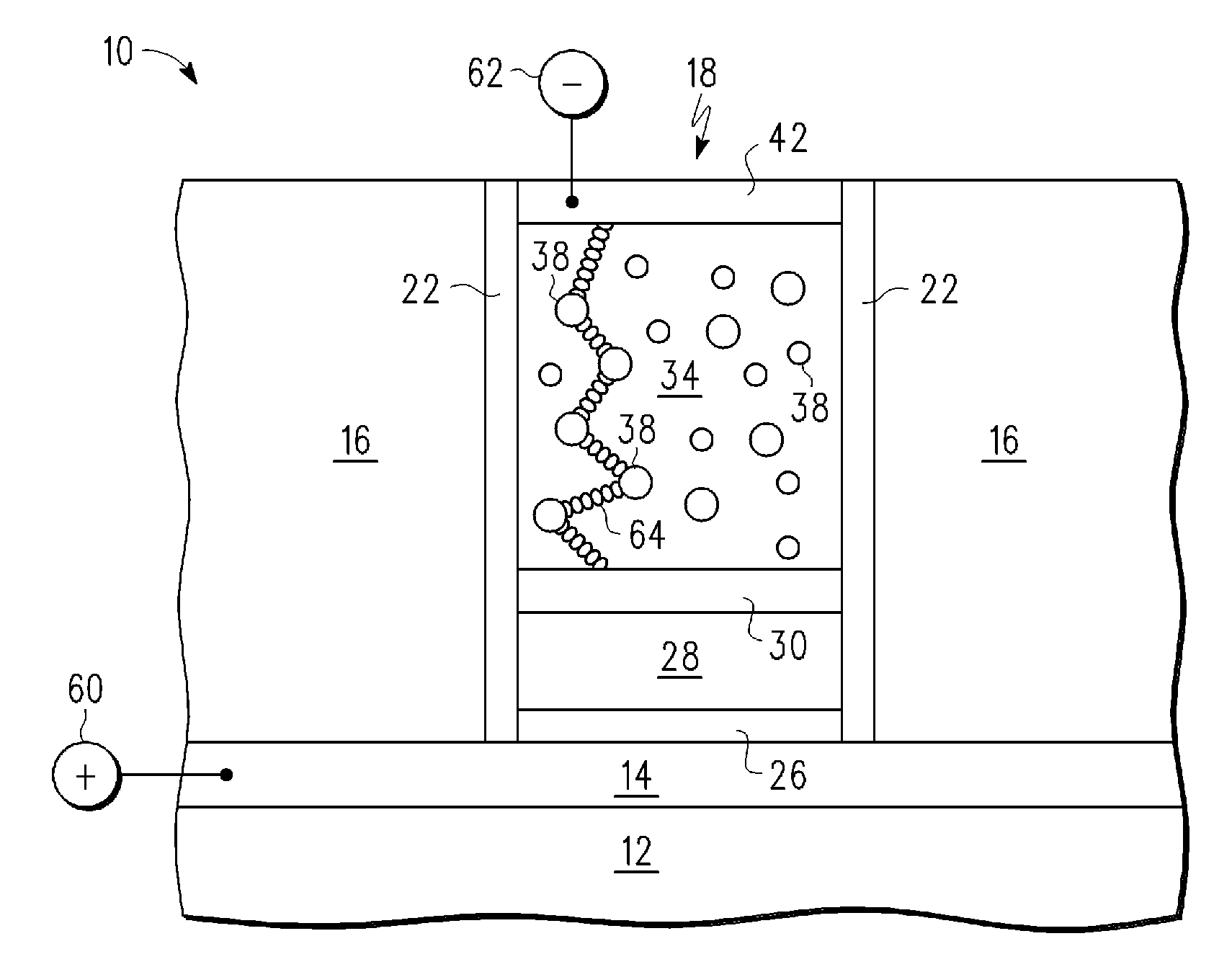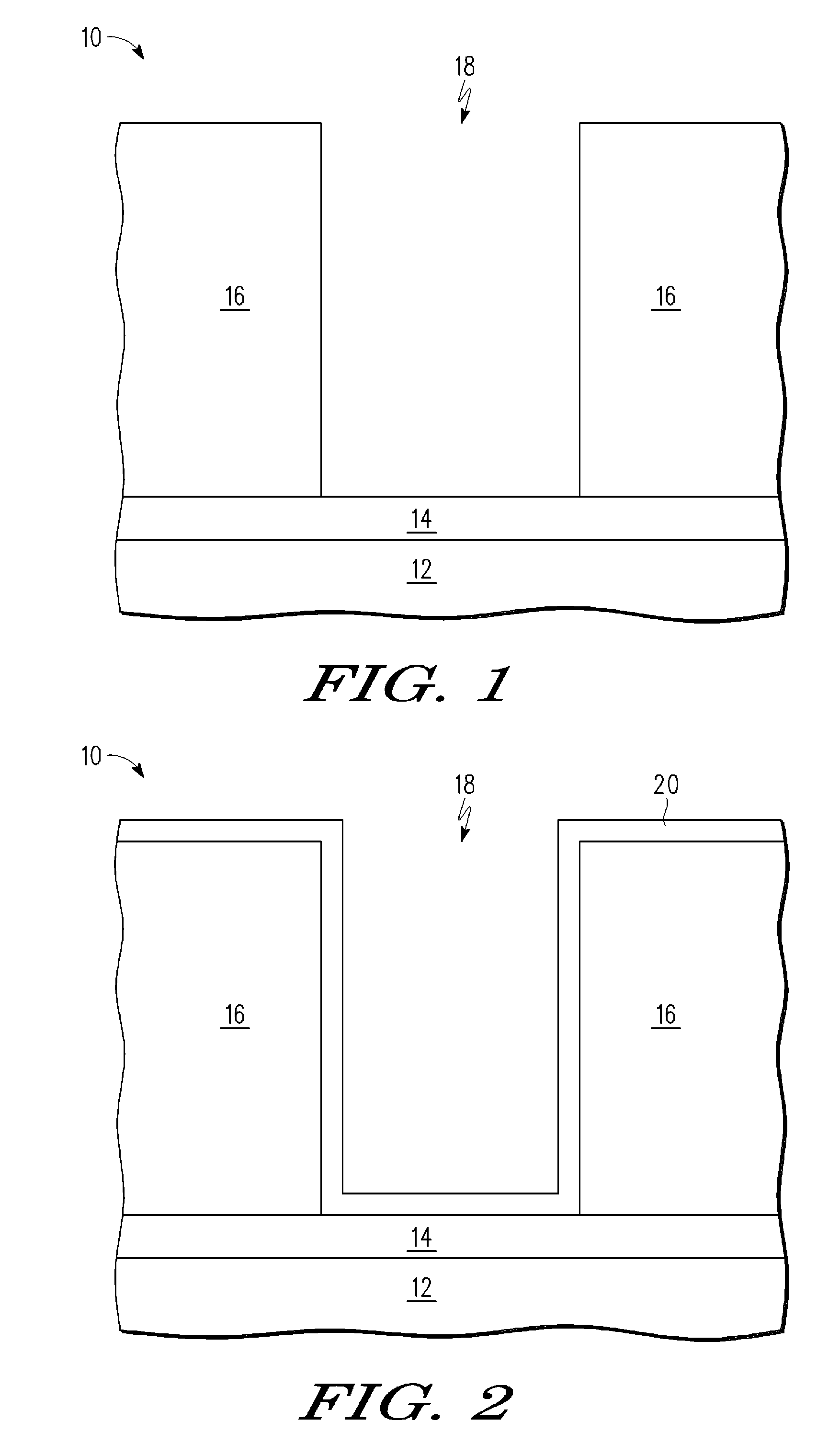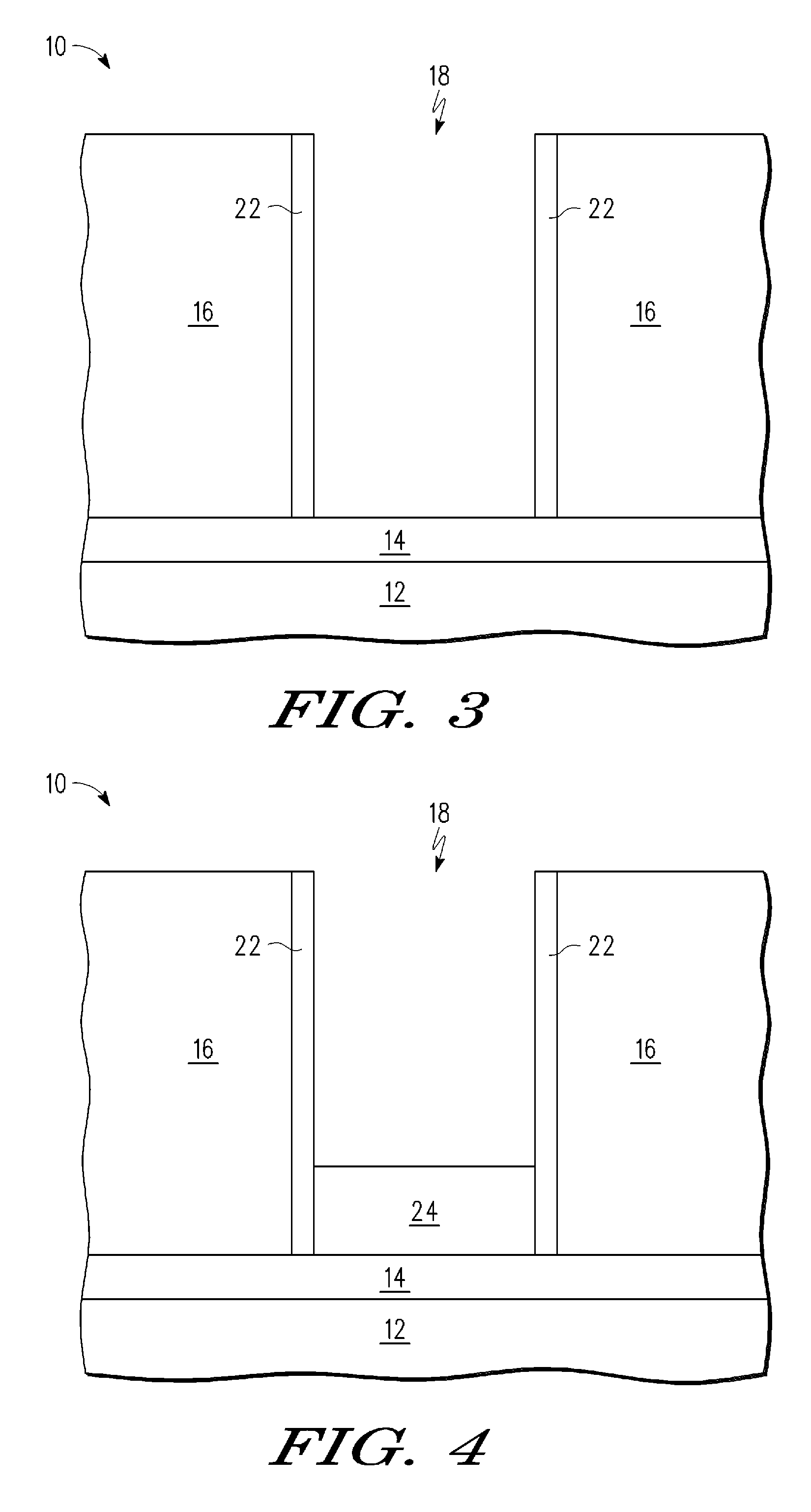Conductive bridge random access memory device and method of making the same
a random access memory and conductive bridge technology, applied in the field of semiconductor memory devices, can solve the problems of difficult removal of silver sputtering from unwanted areas, significant variability in the operation of memory cells from one cell to another, and large uncontrolled silver diffusion
- Summary
- Abstract
- Description
- Claims
- Application Information
AI Technical Summary
Problems solved by technology
Method used
Image
Examples
Embodiment Construction
[0013]According to one embodiment of the method of the present disclosure, conductive bridge random access memory (CBRAM) devices are formed with use of selective deposition of silver (Ag) in contrast to sputter deposition. In one embodiment, the Ag is deposited by a selective displacement process. In addition, the method includes the formation of a selectively deposited diffusion control layer on the silver. In one embodiment, the diffusion control layer comprises, for example, cobalt (Co), tungsten (W), rhenium, or Molybdenum, and an additional element X (CoWX), where X includes one or more of boron (B), and phosphorus (P). Furthermore, the method of the present disclosure advantageously uses a barrier layer of CoWX for controlling diffusion of Ag within the CBRAM. The barrier layer of CoWX also possesses a thickness dependent barrier property, in which a desired barrier property can be controlled via the barrier layer thickness according to the requirements of a given CBRAM appli...
PUM
 Login to View More
Login to View More Abstract
Description
Claims
Application Information
 Login to View More
Login to View More - R&D
- Intellectual Property
- Life Sciences
- Materials
- Tech Scout
- Unparalleled Data Quality
- Higher Quality Content
- 60% Fewer Hallucinations
Browse by: Latest US Patents, China's latest patents, Technical Efficacy Thesaurus, Application Domain, Technology Topic, Popular Technical Reports.
© 2025 PatSnap. All rights reserved.Legal|Privacy policy|Modern Slavery Act Transparency Statement|Sitemap|About US| Contact US: help@patsnap.com



